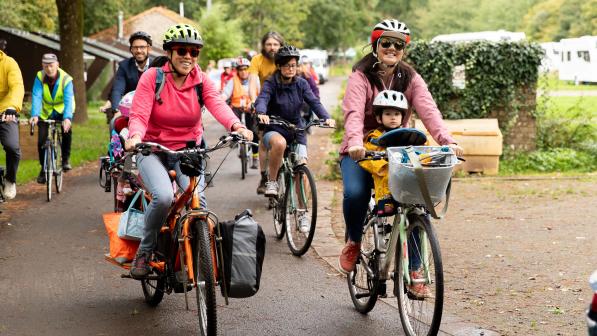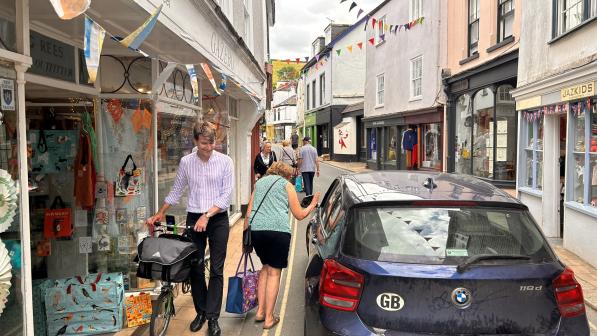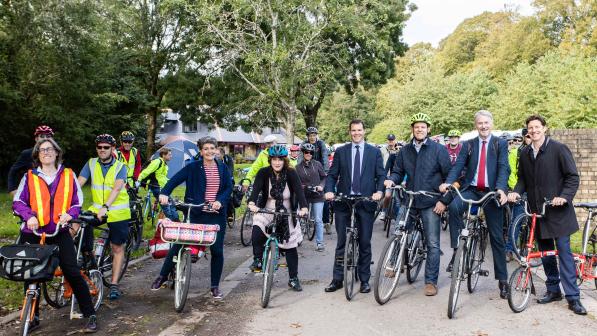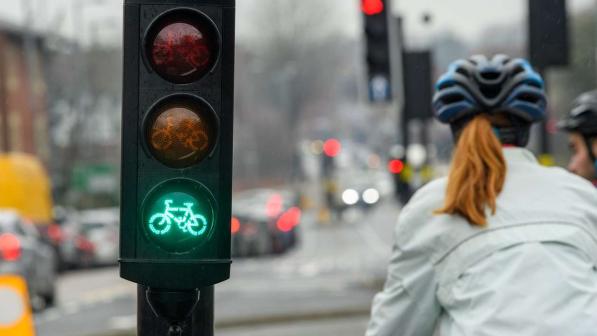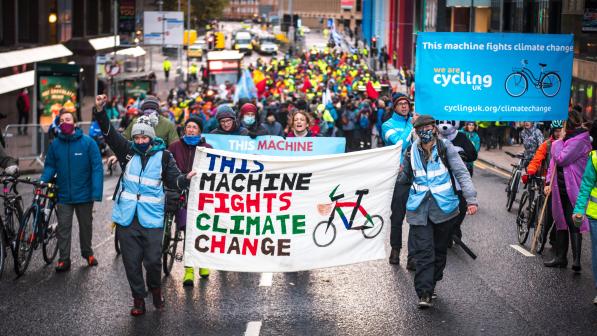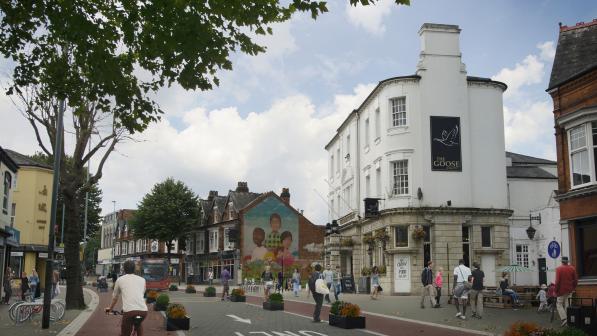Are rural communities being left behind with active travel?

The commission of Active Travel England (ATE) is certainly something to be excited about. Since Chris Boardman appeared on our television screens in January, setting out the vision of a new ‘golden age’ for walking and cycling, fans and advocates of active travel have rightly sensed the appetite for change, and delivery of streets for people, as opposed to dominated by the car.
On July 21, ATE’s framework confirmed it will act as the ‘Ofsted’ for highways authorities, as commissioner and inspectorate, assessing all applications for active travel capital and revenue funding, ensuring all awarded schemes meet the standards set out in LTN 1/20, amongst other functions.
Its focus, delivering a modal change on behalf of the Department for Transport (DfT), for 50% of all short journeys to be walked or cycled in towns and cities by 2030, sharing out the package of £2 billion active travel funding announced by the Government in May 2020.
If we look to maximise the number of people likely to benefit from this funding, arguably the best ‘bang-for-buck’ investment will always to be focussed on major cities. But what does this mean for people living outside these areas? Are market towns and remote villages destined to be neglected? Will active travel remain a pipe dream to the 10 million people that live in rural areas across England alone?
Why invest rurally?
The focus on densely populated areas is not new, as highlighted in the UK Government’s Gear Change document (2020). It’s also right to point out the reservations many have about rural cycling networks. Worries at the expense of adapting rural roads to the requirements for active travel, and confusion how LTN 1/20 is best applied within remote areas.
Some transport bodies are acutely aware of the challenges they face. Transport East, responsible for some of England’s most remote areas, identified only 1 in 3 rural residents could access education or employment through sustainable modes. Can car-dependency even be addressed in these regions?
How can we expect local politicians to respect the need for active travel, when they perceive a national policy only applicable to major cities, 20% of constituencies, or 15% of councils? People are only talking about London, the ‘Bee Network’ of Manchester, or the ‘cycling superhighways’ in Birmingham. Are there any good examples of rural active travel networks to take inspiration from?
What could work
Escaping the fixed, urban-centric mindset towards active travel is the first step. Just because a city-style walking and cycling network is ambitious for a rural area, it doesn’t negate the requirement for separation between pedestrians, cyclists, and motor vehicles. It’s what LTN 1/20 prescribes, after all.
The next step is to be creative and accept there is no one-size-fits-all approach to promote step change in your area.
Is there existing infrastructure that could be built upon? The upgrade of a shared use path, or refurbishment of a national cycle network route may prompt travellers to leave the car at home. These schemes are likely to be robust political and financial investments.
Are there greenways or public rights of way, which could be repurposed for active travel? Cycling UK looks within our off-road campaigning to join up these ‘lost ways’ and deliver exciting new off-road routes. A note here that an important distinction is to consider the purpose of the route. Does it have purely leisure or functional potential, or could it fit dual purpose? Sustrans flagship Bristol-Bath railway path is a fine example of this.

Thinking out-of-the-box
Could rural highways authorities explore alternative ways to create a more cycle-friendly environment for roads shared between cyclists and motor vehicles?
In the recent Cycle City, Active City conference in Sheffield, our Head of campaigns, Duncan Dollimore, praised the success of trialling 20 mph speed limits in the Scottish Borders. Across 125 evaluation sites, average speed was found to decrease from above 25mph to above 22mph. Since then, the Welsh Government has made 20mph the default speed limit for all restricted roads.
Another scheme, often overlooked within LTN 1/20, is that of Quiet Lanes, a kind-of ‘rural-LTN’, which places Traffic Prohibition orders on lanes unsuitable for high-volume motor traffic. This removes often dangerous ‘rat-runs’ and aims to improve the quality of life for residents. This was trialled in Truro in Autumn 2021, finding that the number of vehicles reduced by 15-25%.
It's notable that innovative ideas are futile if there is absent political will from local authorities in rural areas. Ambitious commitment to modal shift and carbon reduction must drive investment strategy.
Opportunities on the horizon
Aside from the footprint of Active Travel England, I have reason to believe local authorities will look to embrace active travel in their rural communities.
The DfT plan to consult on new guidance for the rejuvenated Local Transport Plan process for England in the autumn. If this guidance is introduced as the DfT suggest, local authorities will no longer be able to make bold promises with little action. We hope to see a conditional transport funding model, dependent on a quantifiable carbon reduction plan and a robust local cycling and walking infrastructure plan, amongst other things.
We wait in anticipation how rural highways authorities will respond to the guidance, and the degree of enthusiasm to foster solutions to challenge car-dependency.
One thing that will make politicians listen is a cohesive network of local campaigners, astute to the challenges in their area, passionate and vocal to transform the lives of people in their community.
